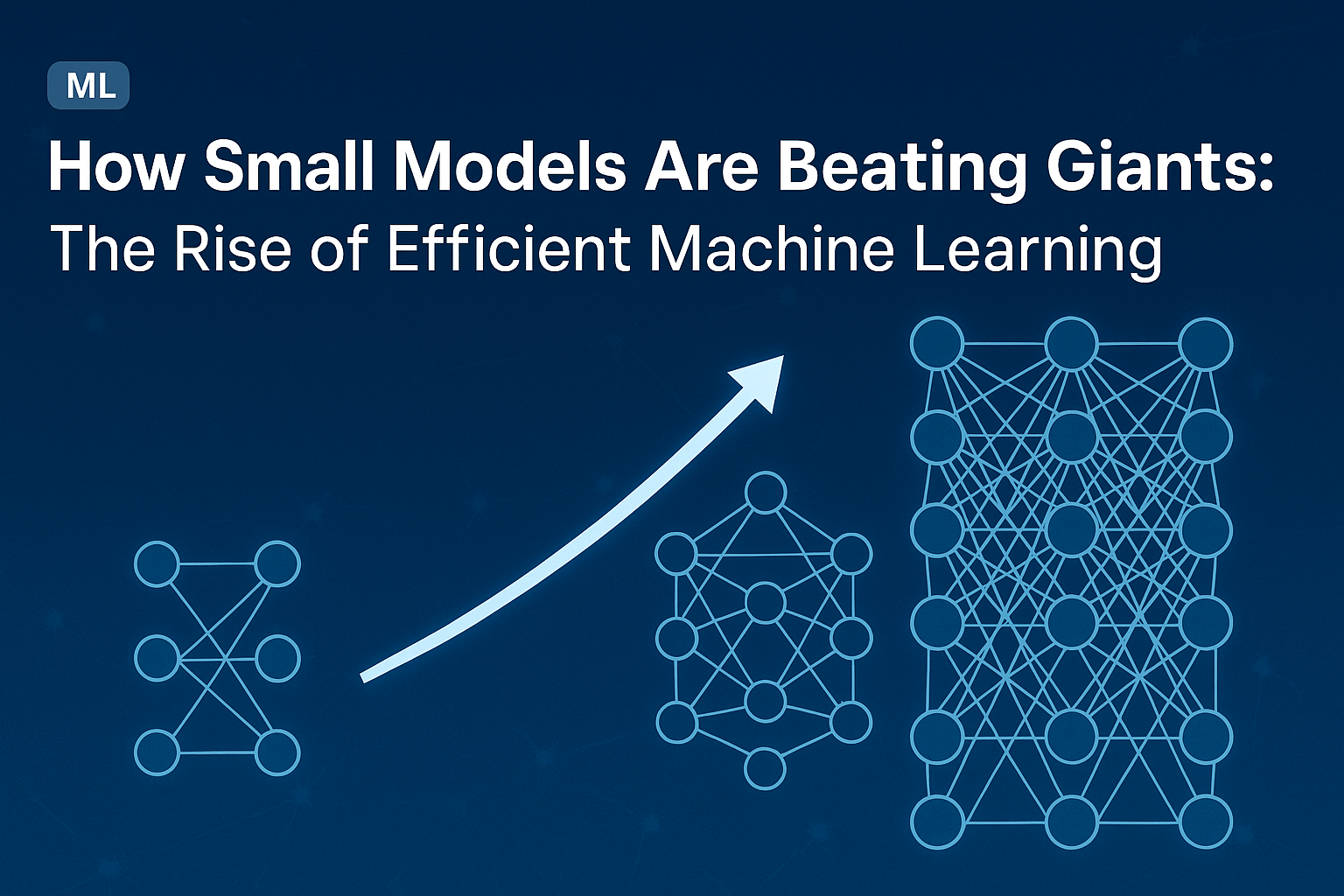How Small Models Are Beating Giants: The Rise of Efficient Machine Learning
Introduction: The Size Illusion in Machine Learning
In recent years, machine learning has been largely dominated by massive models with billions of parameters—like OpenAI's GPT-4, Google's PaLM 2, and Meta’s LLaMA 3. These "foundation models" promise powerful capabilities, but come with a hefty price: huge computational costs, massive carbon footprints, and accessibility barriers. However, a silent revolution is brewing—smaller, smarter models are emerging, offering comparable performance with a fraction of the resources. This shift toward efficiency could reshape the future of AI development, especially in resource-constrained environments.
Why Smaller Models Matter
Large language models are typically trained using massive datasets and GPU clusters, which limit their deployment to only well-funded organizations. According to a 2022 study by AI Index, training GPT-3 consumed an estimated 1,287 MWh of electricity—enough to power 120 U.S. homes for a year (AI Index, 2022). In contrast, smaller models like DistilBERT or MobileBERT offer up to 60% smaller sizes with 95% of the original model's performance (Sanh et al., 2019). This means they can be deployed on mobile phones, IoT devices, or even microcontrollers—opening doors to real-world, on-the-edge applications.
Techniques Powering Small Models
How do small models achieve competitive performance? Several key techniques are responsible:
- Knowledge Distillation: A smaller “student” model learns to mimic the behavior of a larger “teacher” model (Hinton et al., 2015).
- Pruning: Removing less important parameters from a model without significant accuracy loss (Han et al., 2015).
- Quantization: Representing weights with fewer bits (e.g., 8-bit instead of 32-bit), greatly reducing size and inference time (Jacob et al., 2017).
- Architecture Optimization: Designing models like EfficientNet (Tan & Le, 2019) and TinyML models specifically for low-resource environments.
Real-World Impact: From Phones to Farms
Efficient models aren’t just academic novelties—they’re already changing the world. In healthcare, models like TinyML are used for early disease detection in remote clinics without internet (Arm). In agriculture, farmers use low-cost embedded sensors powered by TinyML to detect crop diseases or optimize irrigation (Edge Impulse). In mobile applications, models like Whisper.cpp and DistilBERT are being used for on-device speech recognition, text classification, and sentiment analysis without sending data to the cloud—improving privacy and speed.
Sustainability and Accessibility
The environmental impact of large models is not just technical—it's ethical. Researchers are now urging a focus on Green AI (Schwartz et al., 2019), which emphasizes improving efficiency over brute-force scaling. Small models, by virtue of requiring less data, compute, and storage, make machine learning more inclusive and sustainable. Open-weight initiatives like Mistral and GPT-NeoX are leveling the playing field by offering high-quality models that are lighter and open-source (Mistral AI).
What’s Next?
The future of machine learning may no longer be about building ever-larger models but about doing more with less. With breakthroughs in edge AI, neuromorphic computing, and hardware-aware neural architecture search (NAS), we may soon see a world where tiny models power smart cities, wearable health monitors, and autonomous drones. Research is increasingly focused on energy-efficient AI as a frontier—where size doesn’t compromise intelligence, and efficiency drives innovation.
Final Thoughts
While giant models like GPT-4 get the spotlight, the underdog story of efficient models is arguably more impactful. They represent a future where AI is not just powerful but also practical, ethical, and accessible. Whether you’re a researcher, engineer, or policymaker, the rise of small models signals a new era—where intelligence isn’t measured by size, but by impact.
